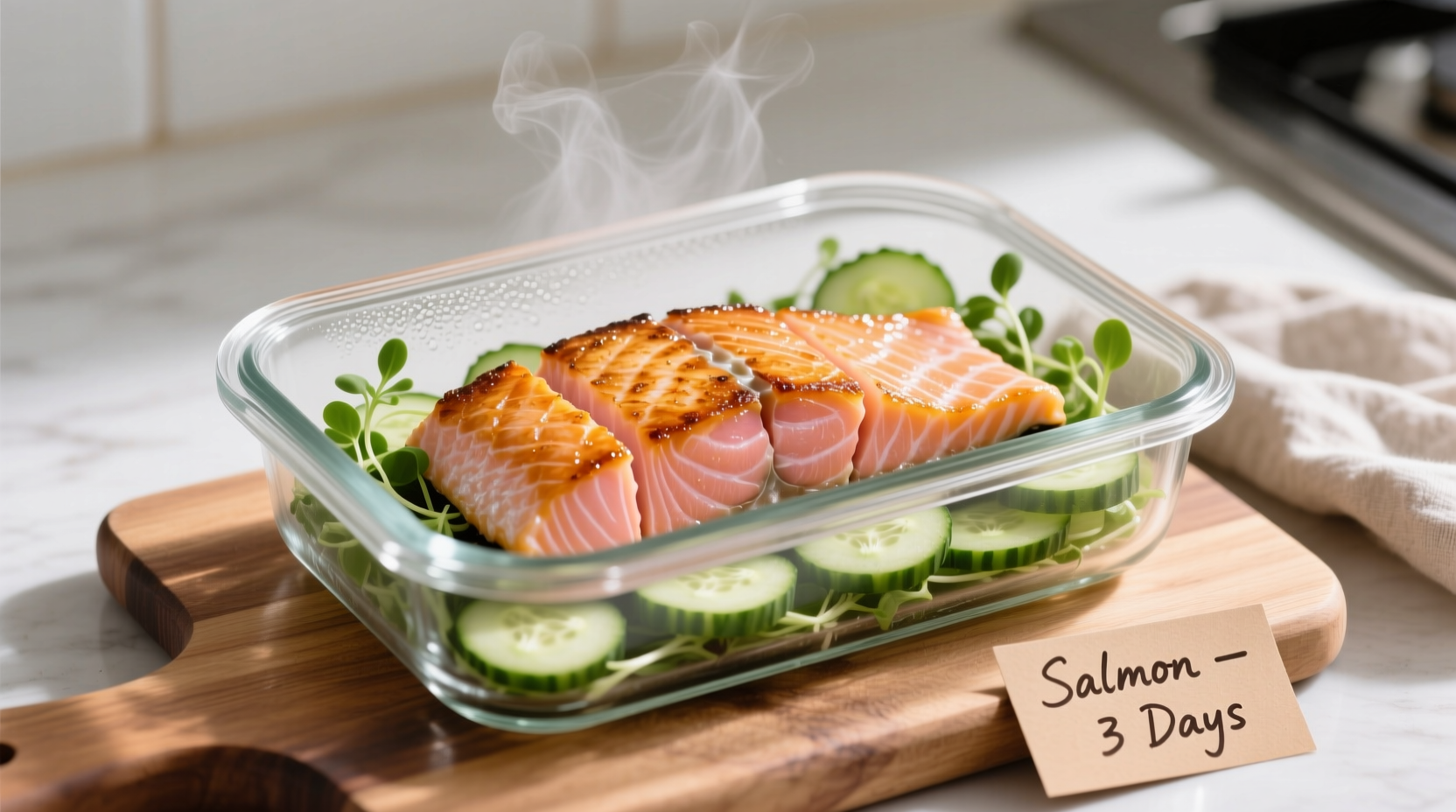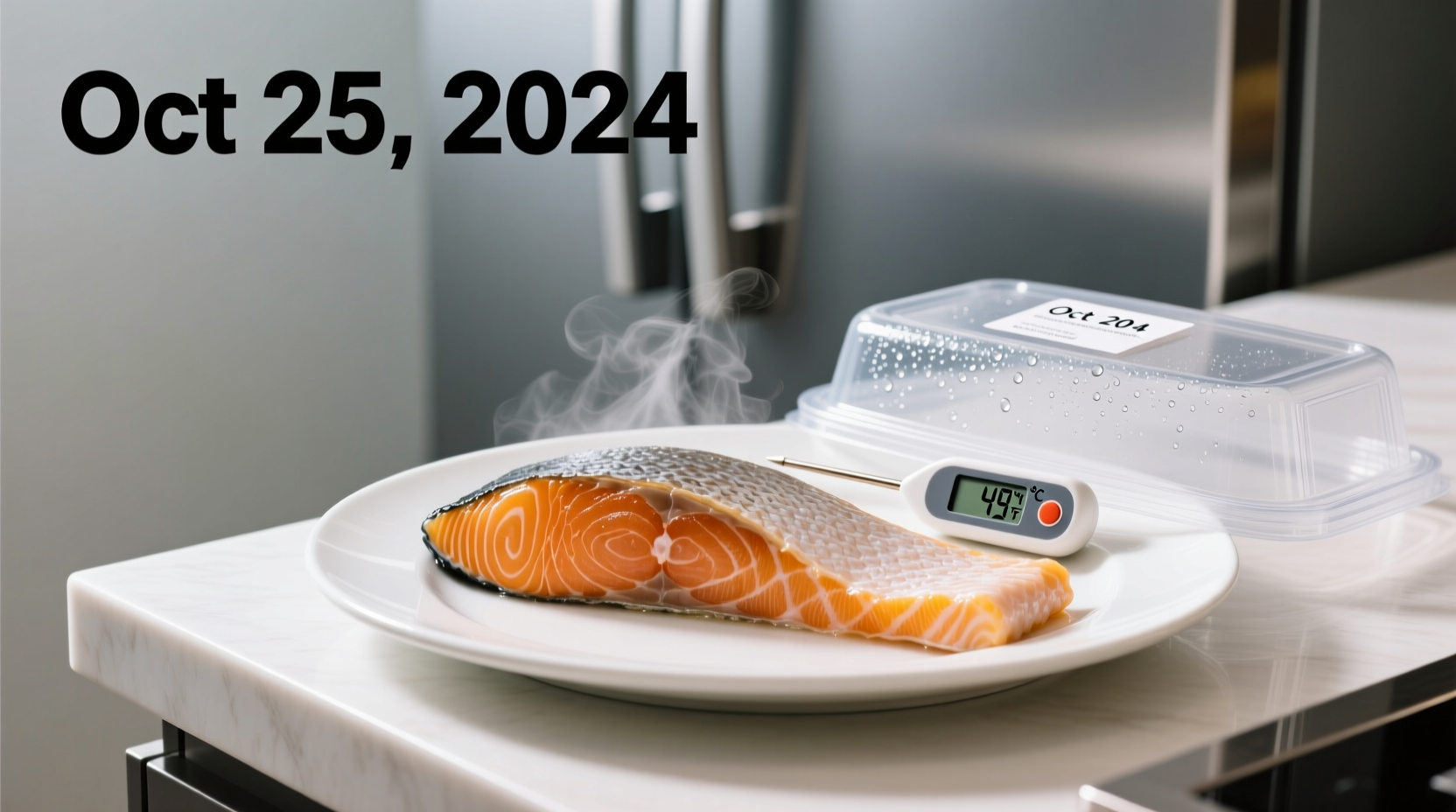Ever found yourself staring at last night's delicious salmon dinner wondering if it's still safe to eat? You're not alone. Approximately 48 million Americans get sick from foodborne illnesses each year, many from improperly stored leftovers. Getting cooked salmon storage right isn't just about avoiding waste—it's crucial for protecting your health. This guide delivers science-backed storage guidelines so you can enjoy your salmon safely while minimizing food waste.
The Science Behind Salmon Spoilage
Cooked salmon enters the "temperature danger zone" (40°F-140°F) as it cools, creating ideal conditions for bacteria like Listeria and Salmonella to multiply rapidly. Unlike raw fish, cooked salmon has had its natural protective barriers broken down during cooking, making it more vulnerable to spoilage.
Food safety experts at the USDA explain that bacterial growth doubles every 20 minutes in the danger zone. This exponential growth is why proper cooling and storage timing matters more than many home cooks realize.
Optimal Refrigeration Storage Protocol
Following these steps ensures maximum safety and quality for your cooked salmon leftovers:
- Cool rapidly - Divide large portions into shallow containers (no deeper than 2 inches) to facilitate quick cooling
- Refrigerate within 2 hours - Or within 1 hour if room temperature exceeds 90°F
- Use airtight containers - Glass or BPA-free plastic containers with tight seals prevent odor transfer and moisture loss
- Store on middle shelf - Avoid the refrigerator door where temperatures fluctuate most
- Maintain 37-40°F - Verify with an independent refrigerator thermometer
| Storage Method | Maximum Safe Duration | Quality Preservation |
|---|---|---|
| Refrigerator (40°F or below) | 3-4 days | Good texture, fresh flavor |
| Freezer (0°F or below) | 2-3 months | Best quality within 2 months |
| Room Temperature | 2 hours (1 hour if >90°F) | Rapid quality deterioration |
This comparison reflects current USDA Food Safety and Inspection Service recommendations (source), which are more conservative than some older guidelines you might find online.
Spoilage Timeline: What Happens Hour by Hour
Understanding the progression of spoilage helps identify when salmon becomes unsafe:
- 0-2 hours: Safe window for cooling and refrigerating
- 24-48 hours: Peak quality period with minimal texture changes
- 72 hours: Beginning of quality decline; texture may become slightly dry
- 96 hours: High risk of spoilage; potential bacterial growth exceeds safety thresholds
- 5+ days: Significant safety risk regardless of appearance

Identifying Spoiled Cooked Salmon
Don't rely solely on the calendar—use your senses to verify freshness:
- Smell test: Fresh salmon has a mild ocean scent; spoiled salmon develops a strong, sour, or ammonia-like odor
- Texture check: Safe salmon maintains firmness; spoiled salmon becomes slimy or sticky to the touch
- Visual inspection: Look for dull appearance, darkening, or white patches of mold
- Taste warning: Never taste questionable salmon—trust your visual and olfactory senses first
Research from the Food and Drug Administration confirms that 32% of consumers incorrectly believe the "sniff test" alone determines food safety. Many dangerous bacteria don't produce noticeable odors, making time-based guidelines essential (source).
Special Storage Considerations
Certain preparation methods and ingredients affect salmon's shelf life:
- Sauce-covered salmon: Lasts 2-3 days (the moisture from sauces accelerates spoilage)
- Marinated salmon: Acidic marinades may extend freshness by 12-24 hours
- Meal-prepped portions: Individual servings maintain quality better than large batches
- Leftover fish dishes: Casseroles or salads with cooked salmon follow the shortest shelf life of any ingredient (typically 3-4 days)
Extending Your Salmon's Shelf Life
When you can't finish your salmon within 3-4 days, freezing preserves both safety and quality:
- Wrap portions tightly in parchment paper, then place in freezer bags
- Remove as much air as possible to prevent freezer burn
- Label with date—frozen cooked salmon maintains best quality for 2-3 months
- Thaw overnight in refrigerator, never at room temperature
- Reheat to internal temperature of 145°F (use a food thermometer)
Consumer surveys reveal that 68% of home cooks discard safe leftovers due to uncertainty about storage times, contributing significantly to household food waste. Proper knowledge transforms how we manage leftovers (USDA Food Waste Reduction data).
When Leftovers Become Risky Business
Certain situations require extra caution with cooked salmon storage:
- Vacation scenarios: Never leave cooked salmon unrefrigerated while traveling
- Power outages: Discard if refrigerator temperature exceeded 40°F for more than 2 hours
- High-risk individuals: Pregnant women, elderly, and immunocompromised should consume within 2 days
- Restaurant leftovers: Follow the same 3-4 day rule as home-cooked salmon
Remember: When in doubt, throw it out. No meal is worth risking food poisoning that could land you in the hospital.











 浙公网安备
33010002000092号
浙公网安备
33010002000092号 浙B2-20120091-4
浙B2-20120091-4